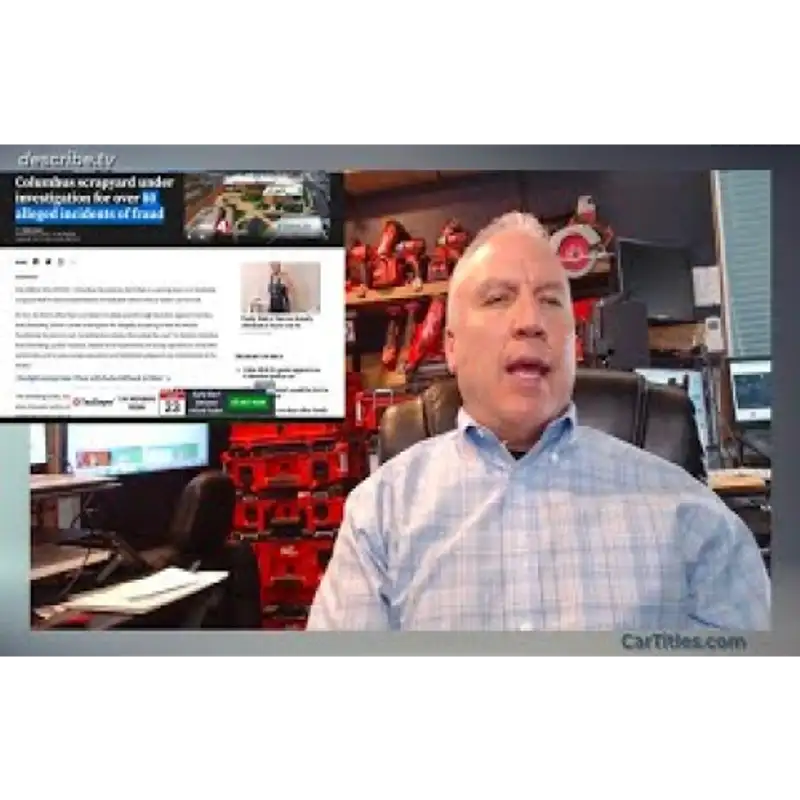Fake Car Titles: Turning Fraud into False Assets
Download MP3In the title industry, we see all kinds of examples of different scams and frauds that happen with vehicle titles. Here's one example: a man filed fraudulent vehicle titles for a vehicle he claimed to own and then made a false insurance claim for the theft of the vehicle. He was arrested on charges of filing false reports and title washing.
How does title washing work? Title washing is when someone takes a legitimate vehicle title record and uses it to clear a title on a vehicle that has a problem, such as being stolen, having a lien, or being branded as salvage. In this case, the vehicle was stolen, and the VIN number was allegedly altered. One common tactic, especially with older cars, is to change the VIN number to represent a car that is legitimate or has paperwork. Sometimes people scrape a VIN number off a car in a junkyard and put it on another car. Be very careful with such practices.
Here’s another case: a scrap yard had 80 fraudulent titles. They accepted dozens of fraudulent vehicle titles or stolen cars for cash. Here’s the breakdown: 17 titles had been reported as stolen by previous owners, 16 titles belonged to companies but were missing the required company signature (making them forged), 15 titles lacked a notary stamp and had only scribbled signatures, and 15 titles were missing a junk designation.
This kind of fraud is becoming more common, especially with vehicles sold by Copart or IAA Auction under a “junk” or “parts-only” designation. Once a title is branded with such a designation, the VIN number becomes invalid. Despite this, some people attempt title washing to remove the junk designation and resell the vehicle.
Additionally, there were 11 titles where the owner's signature didn’t match and were determined to be forged. In such cases, scammers might take a vehicle and forge a signature to transfer ownership fraudulently. There were also instances of bills of sale containing fraudulent VIN numbers—simply made-up numbers. You can’t fabricate a VIN number; it has to be officially issued. Every VIN number is recorded in a system, either by the manufacturer when the car was new or when it was imported, even for vehicles dating back to the 1930s and 1940s.
One example involved auto shredding facilities accepting proof of ownership titles with VIN numbers cut from previous sale documents and taped onto new titles. You can’t cut and paste on a title; it won’t work. Anything that resembles title fraud has likely been seen before by the DMV and the police. There’s no such thing as a brand-new scam that will outsmart them, as they handle thousands of titles daily.
You might get away with fraudulent activity temporarily, but eventually, when the documents are compared with prior records, the fraud will be exposed, and it will become a serious problem. To avoid trouble, ensure all title applications you process are legitimate. Verify that anyone handling title work on your behalf is not engaging in scams or filing fraudulent titles. Otherwise, your title might be revoked, and you could face serious consequences.

